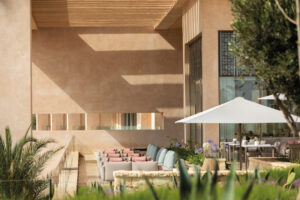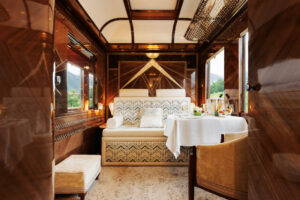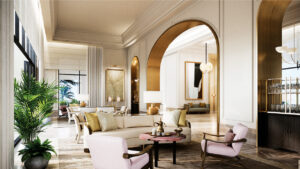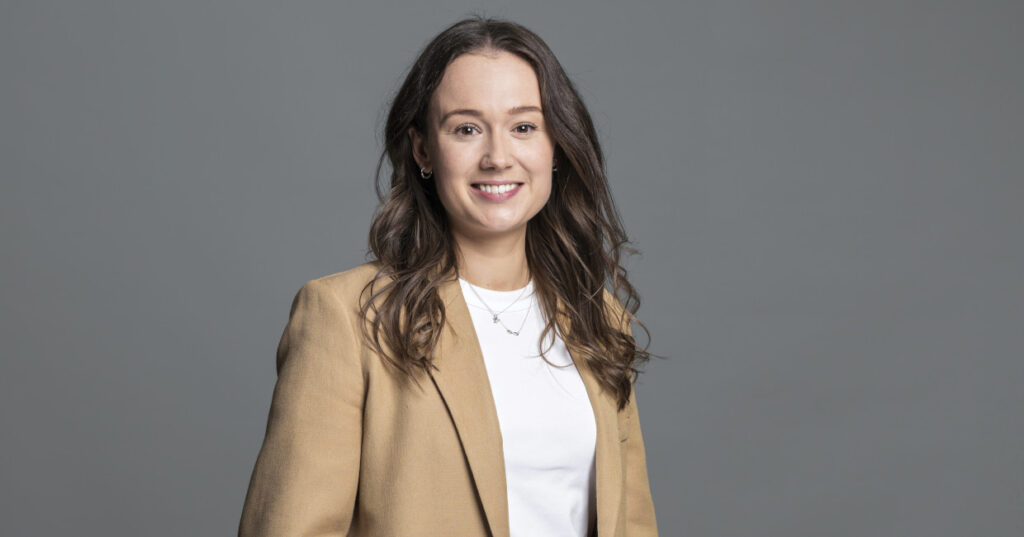WATG is a global integrated design firm, specialising in advisory, masterplanning, architecture, landscape, and interior design – through Wimberly Interiors. The company works to champion the careers and ideas of young designers and Rachel Johnson, Managing Principal, identified Olivia Creaney-Birch as one of the most promising up-and-coming designers in their ranks. Vicky Lewis met with Olivia to find out about her career to date and the projects she has completed so far.
As a ‘boundless, independent interior design firm that has broken down barriers in geography and creativity’ since its founding in New York in 2011, Wimberly Interiors is now using its platform to train and support the next generation of young designers.
Olivia Creaney-Birch is one-such designer. She started working with the company four years ago and has already been promoted to intermediate designer within the Wimberly Interiors team. Rachel Johnson, Managing Principal at Wimberly Interiors, has identified her as a rising talent within the industry, she said: “Olivia is a passionate and skilled designer, and she is an excellent representation of the ingenuity and adaptability we champion at Wimberly Interiors.”

Having studied industrial design at Brunel university, her training experience mainly lay in product design, but she said: “I think I always knew I wanted to be an interior designer; I wasn’t fully ready to commit at that age, but I knew I had a passion for design. My focus during that time was product centred, then I had the chance to work at a lighting design firm during my placement year. Through this placement, I was able to meet interior designers that were involved in a wide range of projects. That’s what helped me decide that interior [design] was definitely for me.”
I was curious to know if her experience as a product designer influenced the avenue she focussed on. “When I joined Wimberly, because of my background, I mainly focused on FF&E because I had such an in-depth knowledge of product design,” she said.
Her skills in design were recognised by the company and she was rewarded with access to some incredibly exciting projects. One being the Venice Simplon-Orient-Express, a Belmond Train. This stage of the restoration was separated into two distinct projects – the dining cars and the cabin suites. The dining cars were more of a renovation-style project, with the case of the train remaining but changes made to upholstery fabrics and carpets. Olivia said: “With that, I was involved right from the start, as it was a smaller scale project. But everything there had to be so bespoke and luxurious. For example, the drapery is not just one treatment: it’s got a tape to the leading edge and then a fringing to it and the blinds are inspired by vintage lace. Everything is so detailed, which was really amazing to work on but means it’s a much bigger project than you ever really realise at the start.”

The second part of the project focused on the design of four ultra-luxurious private cabin suites, adorned with exquisite marquetry. Olivia explained: “With the cabin suites, that was the complete refit. So obviously there was a bigger team with the work being more technically focused, and I assisted on that, but again the FF&E and bespoke fabrics allowed us to really bring it to life.”
She spoke with true passion about the project: “That was 100% a highlight of my career so far. To be involved in a space like that which is on so many people’s bucket list – it’s a once in a lifetime experience and has made me really excited about the rest of [my] career.”
We discussed how the design process for the train was a challenge due to space constraints but that the train itself and the journey it goes on provided much of the inspiration. Olivia explained: “With the richness of the timbers and the marquetry, and all those kinds of high-shine finishes, you instantly think of luxury and that exists already on the train. But it was quite challenging to match that up with the right materials. We found that bold colours worked nicely; those strong golds and greens really stood out and helped to create that memorable experience.”
I was keen to find out about inspiration – particularly for projects like the Venice Simplon-Orient-Express – where the space not only is a challenge in terms of size, but also is not fixed in one location. I was intrigued to hear that the team had still managed to take inspiration from locations – those found along the train’s journey. Olivia explained: “I think inspiration can always be taken from the location, and where that project is based. It’s all about making sure you’re authentic to the story of the space, and speaking to its environment, to make sure that everywhere feels part of the design.
“That’s probably the most exciting part of a project like that – finding the narrative and the story behind it. With the train it was quite interesting because it goes through so many different locations, so we were able to speak to that whole journey, which is why we went with the theme of the different landscapes the train goes through for those suites. Each cabin is related to the type of scenery you’ll be seeing as you go along the journey.”
Having had such an exciting start to her career, I was interested to hear about any other projects she was particularly proud of. The one that immediately came to mind for her was The Four Seasons, The Pearl – Doha: “Mainly because of the scale. I learned so much because it was the first time I fully realised how much detail goes into completing a project and all of the stages involved. When I joined that project, most of the design was already in place, I joined to help with the specifications, bespoke furniture drawings and mood boards. Then, I watched the project progress, working on it through the construction administration phase and saw how extensive that process really is – to make sure everything you envisioned is fully created.”
Does she get to have that full circle moment and see her creations come to life? “I was able to visit Doha before the hotel opened – the artwork was being hung and a lot of the furniture was still wrapped up but being able to walk into the visual was really amazing, really surreal. And to see it now on social media, it is really lovely to see people enjoying it.”
Moving away from the projects she had been involved with, I was keen to hear, as a relative newcomer to the industry, what she enjoys about working in the sector and where her passions lie.
“I think just the sheer creativity of the industry: the fact you can have a team of designers working on the same brief, yet we will all come up with an infinite amount of possible outcomes. And it’s something you can never really stop thinking about. I love that it’s so immersive, and the design process never really stops – there are constant opportunities to add further or edit things in a design. It’s a privilege to be involved in designing amazing memories for people and creating spaces that make people feel really special.”
And what would she improve about the industry? Is anything lacking? “I think it’s really important to continue to give a voice to the younger generation and provide a platform where excitement and engagement is able to be spread and shared. I think some of the most interesting conversations you can have about design are with the people that are just entering the industry and have so much excitement about it. Continuing to champion younger voices is absolutely essential.”

Olivia has made huge strides in her work since beginning her career at Wimberly and the influence of her colleagues has been key. I asked her about the learning experiences that she has benefitted from across the projects she has been a part of: “When we were working on The Pearl, I learned a lot from our technical team: their attention to detail and their ability to ensure that quality was maintained throughout the four-year process. I learned and witnessed the importance of staying engaged and passionate about turning the initial vision into a reality.
“The importance of communication across the large-scale projects cannot be underestimated. It’s a huge collaboration, for example, with The Pearl we worked with artwork consultants and that was a new experience for me. I loved the process of working with the artwork consultants to choose the pieces and learning about local artists we could showcase.”
I asked her about the hints and tips, or dos and don’ts, she would pass on to those just starting out in the industry. Her reply? Whatever you do, make yourself heard! “If you have something to say, don’t be shy about it. Also, practice presentations all the time! The job needs a lot of preparation, so stay excited about it, stay engaged and remember every tiny part of the design process makes a difference. Whether it’s an alternative fabric or drawing a sofa detail in a slightly different way – the magic is in those ideas being realised and brought to life!”
Drawing our chat to a close, I wanted to find out her personal hopes and goals – as a designer with established success in her young career, what’s next? “I plan to stay as creative as possible, to keep challenging myself to work on as wide a range of projects as possible and keep growing, developing and learning all the time.”
Rachel Johnson concluded by expressing pride in the work Olivia has completed: “It is a delight working with her and being able to witness her meticulous attention to detail, showcased in the intricate designs for projects like the Venice Simplon-Orient-Express and the recently opened Four Seasons, The Pearl in Doha.” Olivia Creaney-Birch is clearly a designer to watch for the future.



